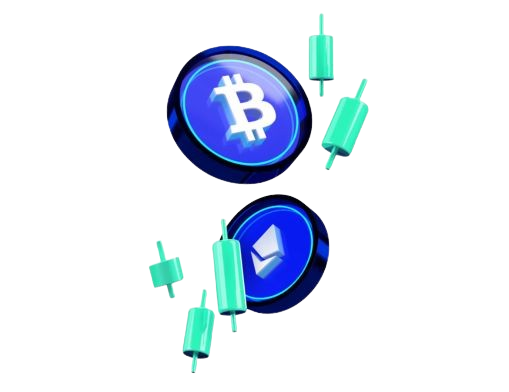Ripple (XRP) is currently trading at around $0.56 as at the time of this writing with a market cap of $31.7 billion. XRP is a cryptocurrency that was created to facilitate fast, inexpensive, and scalable financial transactions globally, particularly in cross-border payments and banking infrastructure. So, how do you trade XRP and why trade it?

Why trade XRP?
1. Legal and regulatory developments
On August 7, 2024, a Manhattan court ordered Ripple Labs to pay the U.S. Securities and Exchange Commission (SEC) approximately $125 million in penalties over its ongoing lawsuit. This lawsuit has been a pivotal issue for Ripple, as it involves questions about whether XRP should be classified as a security. The outcome of this legal battle is crucial as it could set a precedent for how other cryptocurrencies are regulated in the United States. Despite the penalty, it's unclear if this will mark the end of Ripple's legal challenges with the SEC, which adds a layer of uncertainty and speculation to the trading of XRP.
2. Potential Ripple IPO and XRP ETF
Amidst the regulatory battles, there are rumors of a potential Ripple Initial Public Offering (IPO) and the launch of an XRP Exchange Traded Fund (ETF). Both developments could significantly impact XRP’s market perception and value. An IPO would likely bring increased transparency and legitimacy to Ripple, potentially boosting XRP's price. Similarly, the introduction of an XRP ETF would make it easier for institutional and retail investors to gain exposure to XRP, likely increasing demand and price stability.
3. Market speculation and volatility
These rumors and regulatory events often lead to increased market speculation and volatility. For traders, volatility could mean greater opportunities for profit (as well as risk). Traders who can navigate the news landscape effectively could capitalize on price swings to make gains.
4. Innovation and use cases
Ripple and XRP are at the forefront of financial technology innovation, particularly in improving cross-border payment systems and reducing transaction costs and times. The ongoing development and potential new partnerships or projects related to Ripple could drive investor interest and affect XRP’s price.
What's your Trading Style?
No matter the playing field, knowing your style is the first step to success.

Steps to trade XRP CFDs with TradingMoon
1. Open an Account with TradingMoon
Visit the TradingMoon website and sign up for an account. You’ll need to provide some personal details and go through a verification process to comply with financial regulations.
2. Deposit funds
Once your account is set up, deposit funds using one of the supported payment methods.
3. Understand the platform
Get familiar with the TradingMoon trading platform.
4. Plan your trading strategy
Use the tools available on TradingMoon to analyze the current market conditions for XRP. Look at historical price data, read the latest market news, and use technical analysis tools to help forecast future movements. Set clear goals for your trade, including entry and exit points. Decide on stop-loss and take-profit levels to manage your risk effectively.
5. Execute a trade
Once you’ve done your analysis and planned your strategy, place your trade. You can choose to go long (if you believe XRP’s price will rise) or short (if you believe it will fall). Use market orders for instant execution at current prices, or limit orders to specify a better price you’re willing to enter the market at.
6. Monitor and adjust your position
After placing your trade, monitor the market closely. Use TradingMoon’s platform to adjust your stop-loss or take-profit settings in real-time based on market changes.
7. Close your position
Close your position manually when your take-profit or stop-loss levels are reached or if you decide to exit your trade based on your analysis of market conditions.
8. Review and learn
After closing your position, review the outcome of your trade. Analyze what went right or wrong and use these insights to improve your future trading strategies.
What better way to welcome you than with a bonus?
Start trading with a $30 bonus on your first deposit.
Terms and Conditions apply

Key technical indicators and chart patterns to consider when trading XRP
1. Moving Averages (MAs)
What is it? A moving average smooths out price data by creating a constantly updated average price. This is useful to identify the trend direction and potential reversals.
How to use it?
- Simple Moving Average (SMA): Shows the average price over a specific number of days.
- Exponential Moving Average (EMA): Similar to SMA but gives more weight to recent prices, making it more responsive to new information.
Trading strategy:
- Bullish signal: When the short-term MA (like a 10-day MA) crosses above a long-term MA (like a 50-day MA), it suggests an upward trend, and it might be a good time to buy.
- Bearish signal: When the short-term MA crosses below the long-term MA, it suggests a downward trend, signaling a potential sell.
2. Relative Strength Index (RSI)
What is it? RSI is a momentum oscillator that measures the speed and change of price movements on a scale from 0 to 100. It helps identify overbought or oversold conditions.
How to use it?
- An RSI above 70 usually indicates that XRP is overbought (possibly overvalued and ready for a price correction).
- An RSI below 30 suggests XRP is oversold (possibly undervalued and could rise).
3. Support and resistance levels
What is it? Support is a price level where a downtrend can be expected to pause due to a concentration of demand. Resistance is the opposite—a price level where a trend can pause or reverse due to a concentration of selling interest.
How to use it?
- Identify these levels on your chart to determine where prices might stop and reverse. These are crucial for setting entry and exit points in your trades.
4. Head and shoulders pattern
What is it? This is a chart pattern that predicts a bullish-to-bearish trend reversal. It is one of the most reliable trend reversal patterns.
How to use it?
- Formation: Looks like a baseline with three peaks; the middle is highest (the head) and the two others are close in height (the shoulders).
- Bearish signal: When the price falls below the neckline (drawn through the bottom of the peaks), it suggests a reversal from bullish to bearish trend.
5. MACD (Moving Average Convergence Divergence)
What is it? MACD is a trend-following momentum indicator that shows the relationship between two moving averages of a security’s price.
How to use it?
- Signal line crossover: When the MACD falls below the signal line, it is a bearish signal, which suggests that it might be time to sell. Conversely, a crossover above the signal line suggests an opportunity to buy.
Risk management tips when trading XRP
- Set stop-loss orders: Limit potential losses by setting stop-loss orders at predetermined price levels.
- Diversify: Spread your investment across different assets to mitigate risks.
- Use leverage cautiously: Leverage can magnify gains and losses, so use it judiciously.
- Stay informed: Keep up with news and developments that could impact XRP’s price.
- Regular reviews: Continuously assess and adjust your positions based on market changes.
- Risk capital: Only trade with money you can afford to lose, preserving your financial stability.
Conclusion
Remember, while you could trade XRP for potential gains, it's important to approach trading with caution and a strong emphasis on risk management. Cryptocurrency markets, including XRP, are highly volatile and can change rapidly. Ensure you use tools like stop-loss orders to protect your investments, stay informed about market trends and regulatory updates affecting XRP, and only invest what you can afford to lose. Source: investopedia.com











